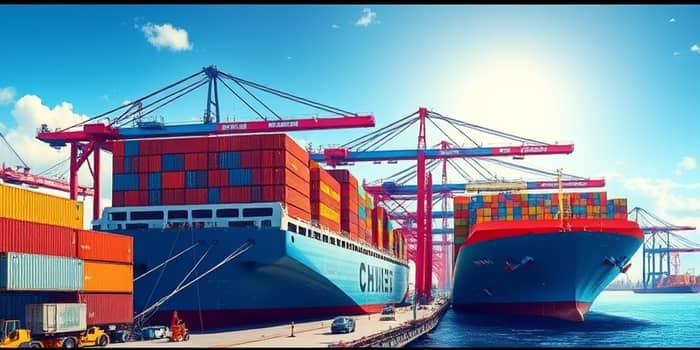
After years of turmoil, the shipping industry is witnessing a profound shift as ocean freight rates retreat from their pandemic-era peaks. What once felt like an endless climb to unprecedented highs in global logistics is now giving way to a more balanced market, offering hope to businesses and consumers alike.
During the height of the COVID-19 crisis, shipping rates surged under the combined strain of pandemic-induced disruptions and bottlenecks. Port closures, labor shortages, and an explosion in e-commerce demand drove the cost for a 40-foot container to more than $3,000 by early 2024—over twice the late-2019 level. That period of soaring costs became emblematic of supply chain strain, with companies scrambling to secure capacity.
Starting in 2023, as vaccination efforts spread and trade lanes reopened, we saw the post-pandemic normalization of rates. Supply chain bottlenecks gradually eased, inventories stabilized, and carriers began matching capacity to real demand. Yet, this stabilization was not linear. New disruptions—such as Red Sea tensions and intermittent port congestion—caused sporadic spikes, reminding the industry that volatile market conditions and uncertainty still linger.
Understanding the forces behind these swings is essential for shippers and carriers planning their next moves. A blend of structural and situational factors has shaped current dynamics:
Collectively, these elements have produced a market that swings between tightness and surplus, prompting carriers to announce General Rate Increases (GRIs) in early 2025 after ocean rates plunged 36% from January to March.
Not all shipping lanes are moving in unison. While some routes have reverted to pre-pandemic pricing, others remain elevated as imbalances persist.
Rates from China to Northern Europe hover near 170% of their October 2020 levels due to persistent supply-demand mismatches, while lanes to the U.S. West Coast have returned to pre-pandemic rate territory. Intra-Asia shipping, meanwhile, remains stickier, reflecting ongoing regional demand for manufacturing inputs.
Freight rate normalization reverberates through every link of the supply chain. Cost relief is welcome, but longer lead times and planning uncertainty still pose challenges. Recent disruptions in the Red Sea extended average transit durations to 79 days in April 2024—well above the 65-day norm of 2019.
Shippers are weighing the trade-off between lower spot rates and the assurance of booked capacity, often opting to pay a premium for guaranteed performance.
For carriers, the rollercoaster of rates translated into record profits during peak months, funding fleet expansion and digital investments. Yet the sharp downturn in early 2025 is putting pressure on margins, forcing operators to recalibrate deployment strategies and idle excess tonnage.
Shippers, on the other hand, are adjusting procurement strategies. Many are locking in long-term contracts with built-in flexibility, ensuring capacity while maintaining cost predictability. This shift highlights a new era of collaboration, where carriers and cargo owners share risk and reward.
The maritime industry’s path forward hinges on balancing efficiency with adaptability. Building resilient supply chain structures means preparing for both demand surges and sudden downturns:
With external shocks—such as geopolitical events or economic slowdowns—ever-present, industry leaders are focusing on agility. By embracing data-driven forecasting and flexible contracts, stakeholders can weather the next upheaval with greater confidence.
As we settle into a phase of ongoing market recalibration efforts, the shipping sector stands at a crossroads. The lessons learned from pandemic highs and subsequent normalization efforts are guiding the design of more robust, transparent, and sustainable supply chains. For businesses and consumers worldwide, the return to steadier freight rates represents not just cost relief but also an opportunity to build a more resilient future for global trade.
References













